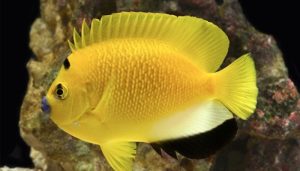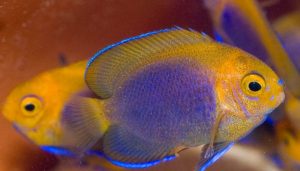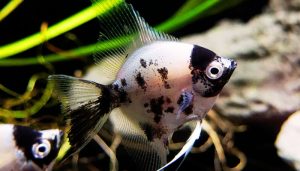Keeping your Ember Tetra healthy starts with the right water conditions. But what is the ideal temperature range for these vibrant little fish? In this care guide, we’ll break down the perfect Ember Tetra Temperature to keep your fish happy and thriving.
The best temperature range for Ember Tetras is between 73°F and 84°F (23°C – 29°C). Keeping the water within this range helps maintain their bright colors, active behavior, and overall health.
Experts like Dr. Paul Loiselle, an aquarist with decades of experience, emphasize that stable water conditions are just as important as the right temperature.
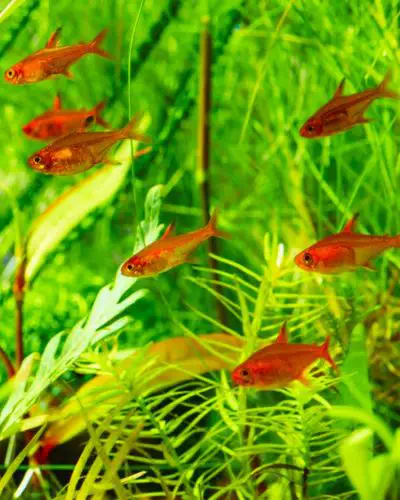
But temperature is just one factor in a well-balanced tank. From tank mates to filtration, many details contribute to a thriving environment. Let’s dive into everything you need to know to create the perfect home for your Ember Tetra!
Table of Contents
ToggleWhat Temperature Do Ember Tetras Like?
Ember tetras thrive in a water temperature range of 24 to 28 degrees Celsius (75 to 82 degrees Fahrenheit). Within this range, they exhibit vibrant coloration and active behavior, making them a joy to observe in a planted tank.
These adaptable fish can tolerate slight variations in temperature, but maintaining a stable environment is essential for their overall health. Sudden changes in water temperature can stress ember tetras, potentially leading to illness or reduced vitality.
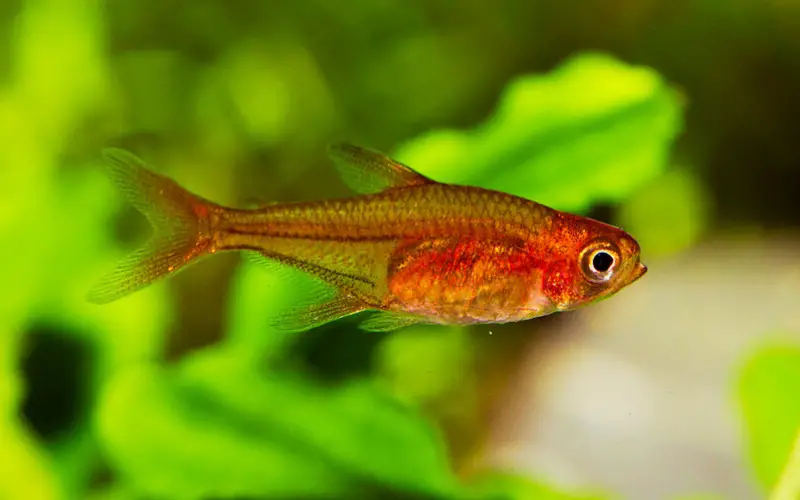
Therefore, it’s crucial for aquarists to monitor the water temperature regularly, especially in Nano tanks where fluctuations can occur more readily.
To achieve the ideal temperature for ember tetras, hobbyists should utilize reliable aquarium heaters and thermometers. Regular water changes are also important, as they help maintain stable water parameters, including ember tetra water temperature.
Keeping a thermometer in the tank will allow you to ensure that the temperature remains consistent. For ember tetras, a stable environment mimics their natural habitat in the Amazon basin, where they thrive in slightly acidic to neutral pH levels and soft to moderately hard water. This careful attention to their temperature needs will lead to a healthier school of ember tetras.
The Optimal Ember Tetra Temperature Range
The optimal temperature for ember tetras is generally considered to be around 26 degrees Celsius (78.8 degrees Fahrenheit). This temperature not only supports their metabolic functions but also enhances their stunning coloration.
When kept in this optimal range, ember tetras tend to exhibit more vibrant hues, making them a beautiful addition to any aquarium setup.
Additionally, maintaining this temperature helps to promote healthy breeding behaviors among these fish, which can be beneficial for hobbyists looking to breed ember tetras.
It is essential to understand that while ember tetras are hardy, they prefer a stable temperature environment. Fluctuations can lead to stress and health issues, which can hinder their overall well-being.
To provide the best care for your ember tetras, consider investing in a quality filtration system that helps maintain consistent water temperature and quality.
A well-maintained aquarium that includes a dark substrate and live plants can help mimic the natural habitat of these fish, further enhancing their color and behavior. By ensuring that the temperature remains within the optimal range, aquarists can enjoy a thriving school of ember tetras.
Temperament and Tank Mates
Temperament is a crucial factor when selecting tank mates for your aquarium, especially in a 10-gallon tank.
For instance, ember tetras, which belong to the family characidae, are known for their peaceful nature and tend to get along well with other small fish. These tetras are schooling fish and should be kept in groups of at least 6 to thrive.
Their striking ember tetras’ color stands out beautifully against a dark substrate and background, making them an excellent option for a South American biotope.
They typically reach a size of 0.8 inches and are very easy to care for, requiring gentle filtration and a range of aquarium water conditions.
Ember tetras enjoy small meals, often feeding on freeze-dry foods, and can easily consume dwarf shrimp or baby shrimp if introduced into the tank. To maintain a balanced ecosystem, consider adding corydoras catfish as they are another good tankmate.
These bottom dwellers complement the tetras’ behavior, as they tend to swim in the upper layers of the tank. When looking to add more fish, it’s wise to ensure that any new additions are compatible with your existing species.
A well-planted freshwater Nano aquarium can provide a stimulating environment for tetras and their companions, promoting a harmonious aquatic community.
How to Set Up an Aquarium for Ember Tetras
Setting up an aquarium for ember tetras requires careful consideration of several factors to create a conducive environment. A minimum tank size of 10 gallons is recommended for a school of ember tetras, as these schooling fish thrive in groups of at least six.
It is vital to include dark substrates, which not only enhance the fish’s coloration but also create a natural-looking habitat.
Additionally, the use of live plants and leaf litter can provide shelter and comfort for these small, peaceful tetras. They prefer to swim in the middle level of the tank, so an open swimming space is ideal.
In terms of water quality, ember tetras prefer slightly acidic to neutral pH levels, typically between 6.0 and 7.5. It is also important to ensure the water is soft to moderately hard, as this mimics their natural habitat in the Amazon basin. Regular water changes are essential to maintain water parameters and quality.
A good filtration system will help keep the aquarium water clean and clear, providing a healthy environment for these fish. By paying attention to these details when setting up an aquarium for ember tetras, hobbyists will create a thriving aquatic community for their beloved fish.
Breeding Ember Tetras
Breeding ember tetras can be a rewarding experience for hobbyists, but it requires specific conditions to encourage successful spawning.
To stimulate breeding, it is crucial to maintain ideal water parameters, including slightly acidic water and a temperature of about 26 degrees Celsius (78.8 degrees Fahrenheit).
Providing a separate breeding tank with soft, dark substrate and plenty of plants will help create a safe environment for the eggs. Ember tetras tend to scatter their eggs among the vegetation, which can increase the chances of survival for the fry.
Feeding the breeding pair with high-quality live foods, such as brine shrimp or daphnia, will help ensure they are in optimal condition for spawning.
Once the eggs are laid, it is advisable to remove the parents from the breeding tank, as they may eat the eggs. The eggs typically hatch within 24 to 36 hours, and the fry will begin to swim freely after a few days.
During this time, offering finely crushed flake food or baby brine shrimp will support their growth and development. With the right care and attention, breeding ember tetras can lead to a successful new generation of these beautiful fish.
Conclusion
Understanding the temperature preferences and environmental needs of ember tetras is vital for maintaining a healthy aquarium. By keeping the ember tetra water temperature within the optimal range of 24 to 28 degrees Celsius, hobbyists can ensure the well-being of their school of ember tetras. Creating the ideal aquarium setup with dark substrates, live plants, and appropriate tank mates like Corydoras or Rasboras will further enhance their liveliness and coloration. Whether you are interested in keeping ember tetras for their beauty or breeding them, adhering to these guidelines will help you enjoy a thriving aquatic community. With proper care, ember tetras can flourish and bring joy to your aquarium for years to come.
Recommended Posts
- What Do Ember Tetras Eat – Top 10 Best Ember Tetra Foods
- Keeping Ember Tetra with Betta: (7 Pro Tips for Success!)
- Ember Tetra Size 101: A Beginner’s Guide to Aquatic Success
- Will Neon and Ember Tetras School or Clash: (Expert Advice)
- Ember Tetra Breeding Behavior: The ULTIMATE Beginners Guide
- Ember Tetra Parameters: PERFECT Aquarium in 3 MINUTES!
- Ember Tetras Eggs: 3 EASY Steps For MAXIMUM Hatch Rate!
- How Long Do Ember Tetras Live: 3 SHOCKING Signs Your Fish is Dying!
- The Surprising Ember Tetras Ph Level for Optimal Fishkeeping!
- Ember Tetras with Shrimp Compatibility: (The Dangerous Truth)
- 3 Reasons Ember Tetra Colors Fade in Aquarium Tank (Solved)
- Do Ember Tetras Need a Heater in their tank: Ultimate Aquarium Care Guide
- Best Ember Tetra Tank Mates: (3 PERFECT Companions!)


